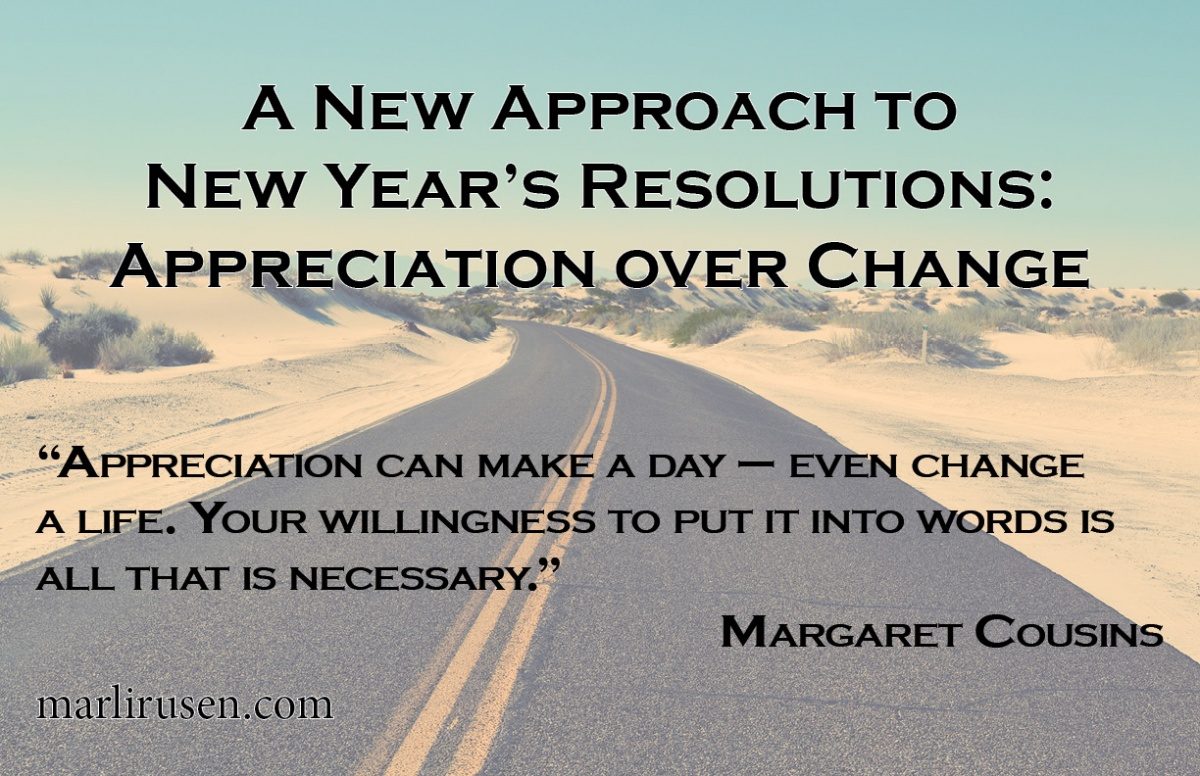Resources > Blog > A New Approach to New Year’s Resolutions: Appreciation over Change

In January of each year, we commonly think back over the past year to reflect on how it went, often with a view to determining what needs to change.
In the workplace, this happens more than once per year. In fact, this is the common way in which organizations move towards a “better” place: they evaluate the metrics – productivity, budgets, expenses and sales – to look for gaps. What went wrong? Where did the team underperform? They then “update” their operational or strategic plans to fill in those gaps.
The fact that businesses are constantly engaged in “new month” resolutions is not a bad thing. If they wish to grow, improve and expand then such critical reflection and ongoing adjustments are necessary. Simply “doing what’s always been done” is the best way to maintain mediocre, struggling workplaces.
However, this singular focus on “resolutions for change” is insufficient to build positive and productive workplaces with committed and engaged teams. Why?
In numerous workplace scans I conduct, individuals (from auxiliary staff to senior executives) shared with me the importance of receiving positive feedback and its connection to their level of engagement and commitment to the organization. The more valued they feel, the more committed they are.
A leader’s focus on someone’s weaknesses should be balanced, wherever practical, with an appreciation for someone’s strengths. In the absence of hearing about what they are doing right, individuals grow disheartened hearing about what they are doing wrong.
Positive feedback and gratitude for what individuals are doing well should be a fundamental part of a healthy and respectful organization.
Make it about New Year’s Appreciation
Instead of beginning this year by conducting a “gap analysis” about last year, start by giving positive feedback to each of your direct reports. Then ask that they do the same with their direct reports. Through this process, each person – at every level of the organization – will receive positive feedback.
Let each team member know about something they did or a way in which they “showed up” in 2015 that was of benefit to you – as the leader – or to the team as a whole. Then, name one attribute (a work habit, a particular skill, an approach or interpersonal strength) that this person should continue doing in 2016 because of its benefit to the team and overall organization.
Excessive details and lengthy dissertations are not necessary. All that is important is that your team members know their presence is valued and their contributions are noted.
The “gap analysis” can wait a week or two. Take this time to appreciate and acknowledge your team. There is no better way to begin a New Year then to start a new tradition.
Speaking of traditions, I look forward to continuing our work together in building the most respectful and productive workplaces ever in the coming year.
All the best.
– Marli Rusen
